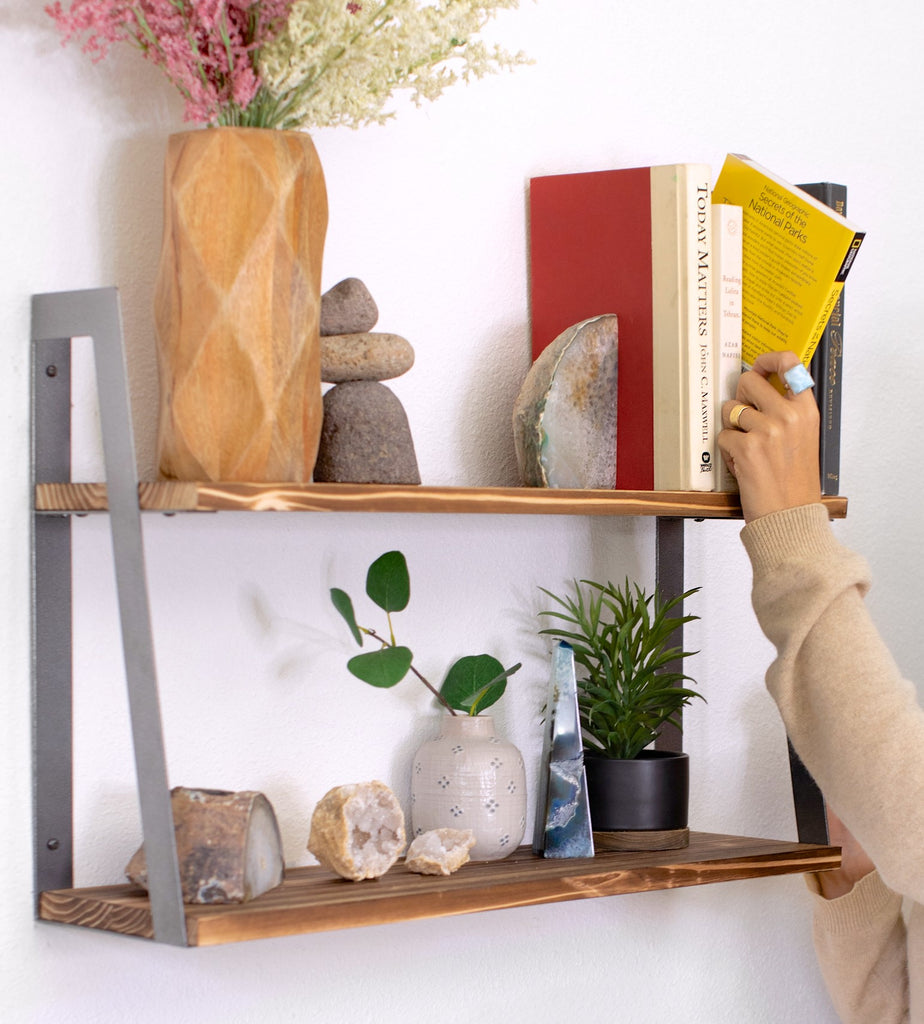Understanding the Load Capacity of Floating Shelves for Safe and Stylish Storage
Floating wall shelves are a popular choice for modern homes, offering a sleek and minimalist way to display and store items. However, one of the most common questions homeowners have is: "How much weight can floating wall shelves typically support?" In this comprehensive guide, we'll explore the factors that influence the load capacity of floating shelves, provide tips for maximizing their strength, and offer practical advice for safe installation.
Understanding the Basics of Floating Wall Shelves
Floating wall shelves are designed to appear as though they are "floating" on the wall without visible brackets or supports. This is achieved through the use of hidden mounting hardware that is securely anchored to the wall. The clean, uncluttered look of floating shelves makes them a favorite in contemporary and minimalist interior designs.
Factors Influencing the Load Capacity of Floating Shelves
Several factors determine how much weight a floating shelf can support:
1. Material of the Shelf: The type of material used for the shelf itself plays a significant role in its load-bearing capacity. Common materials include wood, MDF (medium-density fiberboard), metal, and glass. Solid wood and metal shelves generally support more weight than MDF or glass shelves.
2. Mounting Hardware: The strength and quality of the mounting hardware are crucial. Heavy-duty brackets and anchors can significantly increase the weight capacity of the shelf. It's essential to use hardware that is rated for the weight you plan to place on the shelf.
3. Wall Type: The type of wall you are mounting the shelf on also affects its load capacity. Drywall, plaster, and concrete walls each have different strengths. Shelves mounted on studs or masonry walls can typically support more weight than those mounted on drywall alone.
4. Shelf Dimensions: The length, width, and thickness of the shelf impact its ability to hold weight. Longer shelves may require additional support to prevent sagging, while thicker shelves can generally support more weight.
5. Distribution of Weight: Evenly distributing the weight across the shelf can prevent overloading a single point, which can lead to failure. Heavier items should be placed near the mounting points.
Typical Weight Capacities for Floating Shelves
While the weight capacity of floating shelves can vary widely based on the factors mentioned above, here are some general guidelines:
- Light-Duty Shelves: These shelves, often made of MDF or lightweight wood, can typically support 10-20 pounds. They are suitable for displaying small decorative items, picture frames, and lightweight books.
- Medium-Duty Shelves: Made from solid wood or metal, these shelves can usually support 20-50 pounds. They are ideal for holding books, small appliances, and heavier decorative items.
- Heavy-Duty Shelves: Constructed from robust materials like thick solid wood or metal, these shelves can support 50-100 pounds or more. They are perfect for storing heavy kitchenware, large books, and even some electronics.
Tips for Maximizing the Load Capacity of Floating Shelves
To ensure your floating shelves can safely support the weight you need, follow these tips:
1. Use High-Quality Hardware: Invest in heavy-duty brackets and anchors that are rated for the weight you plan to place on the shelf. Avoid using cheap or undersized hardware.
2. Mount on Studs: Whenever possible, mount your shelves on wall studs. Studs provide a much stronger anchor point than drywall alone. Use a stud finder to locate the studs in your wall.
3. Reinforce with Additional Brackets: For longer shelves or those that will hold significant weight, consider using additional brackets or supports. This can help distribute the load more evenly and prevent sagging.
4. Choose the Right Material: Select a shelf material that is appropriate for the weight you plan to store. Solid wood and metal are generally more durable and can support more weight than MDF or glass.
5. Follow Manufacturer Guidelines: Always adhere to the manufacturer's recommendations for weight limits and installation instructions. These guidelines are designed to ensure the safety and stability of the shelf.
Practical Applications and Examples
To give you a better idea of how much weight floating shelves can support, here are some practical examples:
- Kitchen Shelves: In the kitchen, floating shelves are often used to store dishes, glassware, and small appliances. A medium-duty shelf made of solid wood or metal can typically support the weight of these items, provided it is properly anchored to the wall.
- Living Room Shelves: In the living room, floating shelves are commonly used to display books, decorative items, and electronics. A heavy-duty shelf can support a collection of books and even a small stereo system, as long as the weight is evenly distributed.
- Bathroom Shelves: In the bathroom, floating shelves are used to store toiletries, towels, and decorative items. Light-duty shelves are usually sufficient for these purposes, but be sure to use moisture-resistant materials to prevent damage.
Ready to add durable floating wall shelves to your home? Check out our collection of high-quality floating wall shelves designed to handle all your storage needs. With a variety o materials, sizes, and styles available, you'll find shelves that can support anything from light decor to heavy-duty storage.
Make It Yours at Peter's Good Collection
Upgrade your space with functional and sturdy shelves that combine style and durability!

